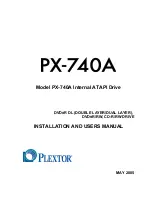
20-79 PID Autotuning
Option:
Function:
[1]
Enabled
3.18.6 20-8* PID Basic Settings
This meter group is used to configure the basic operation
of the frequency converter’s PID Controller, including how
it responds to a feedback that is above or below the
setpoint, the speed at which it first starts functioning, and
when it will indicate that the system has reached the
setpoint.
20-81 PID Normal/ Inverse Control
Option:
Function:
[0]
*
Normal
Normal
[0] causes the frequency converter’s output
frequency to decrease when the feedback is
greater than the setpoint reference. This is
common for pressure-controlled supply fan and
pump applications.
[1]
Inverse
Inverse
[1] causes the frequency converter’s output
frequency to increase when the feedback is greater
than the setpoint reference. This is common for
temperature-controlled cooling applications, such
as cooling towers.
20-82 PID Start Speed [RPM]
Range:
Function:
Size
related
*
[ 0 -
par. 4-13
RPM]
When the frequency converter is first
started, it initially ramps up to this output
speed in Open Loop Mode, following the
active Ramp Up Time. When the output
speed programmed here is reached, the
frequency converter will automatically
switch to Closed Loop Mode and the PID
Controller will begin to function. This is
useful in applications in which the driven
load must first quickly accelerate to a
minimum speed when it is started.
NOTE
This meter will only be visible if
is set to [0],
RPM.
20-83 PID Start Speed [Hz]
Range:
Function:
Size
related
*
[ 0.0 -
par.
4-14
Hz]
When the frequency converter is first
started, it initially ramps up to this output
frequency in Open Loop Mode, following
the active Ramp Up Time. When the output
frequency programmed here is reached, the
frequency converter will automatically
switch to Closed Loop Mode and the PID
Controller will begin to function. This is
20-83 PID Start Speed [Hz]
Range:
Function:
useful in applications in which the driven
load must first quickly accelerate to a
minimum speed when it is started.
NOTE
This meter will only be visible if
is set to [1], Hz.
20-84 On Reference Bandwidth
Range:
Function:
5 %
*
[0 -
200 %]
When the difference between the feedback and
the setpoint reference is less than the value of
this meter, the frequency converter’s display will
show “Run on Reference”. This status can be
communicated externally by programming the
function of a digital output for
Run on
Reference/No Warning
[8]. In addition, for serial
communications, the On Reference status bit of
the frequency converter’s Status Word will be
high (1).
The
On Reference Bandwidth
is calculated as a
percentage of the setpoint reference.
3.18.7 20-9* PID Controller
This group provides the ability to manually adjust this PID
Controller. By adjusting the PID Controller meters the
control performance may be improved. See section
PID
in
the VLT
®
HVAC Drive Design Guide,
MG.11.BX.YY
for
guidelines on adjusting the PID Controller meters.
20-91 PID Anti Windup
Option: Function:
[0]
Off
Off
[0] The integrator will continue to change value
also after output has reached one of the extremes.
This can afterwards cause a delay of change of the
output of the controller.
[1]
*
On
On
[1] The integrator will be locked if the output of
the built in PID controller has reached one of the
extremes (min or max value) and therefore not able to
add further change to the value of the process meter
controlled. This allows the controller to respond more
quickly when it again can control the system.
20-93 PID Proportional Gain
Range:
Function:
0.50
*
[0.00 - 10.00 ] The proportional gain indicates the
number of times the error between the
set point and the feedback signal is to be
applied.
Parameter Description
VLT
®
HVAC Drive Programming Guide
MG.11.CC.02 - VLT
®
is a registered Danfoss trademark
137
3
3
















































